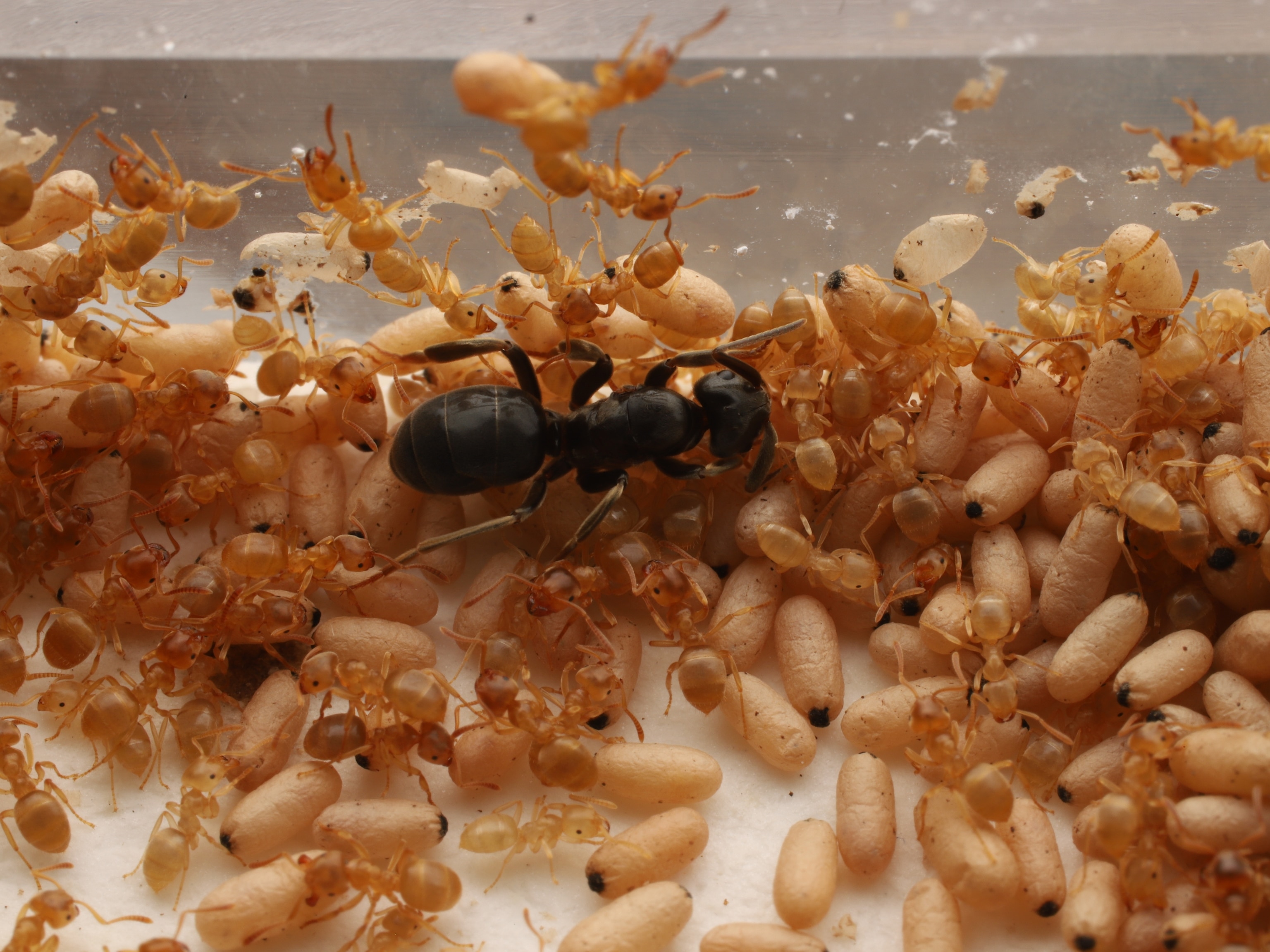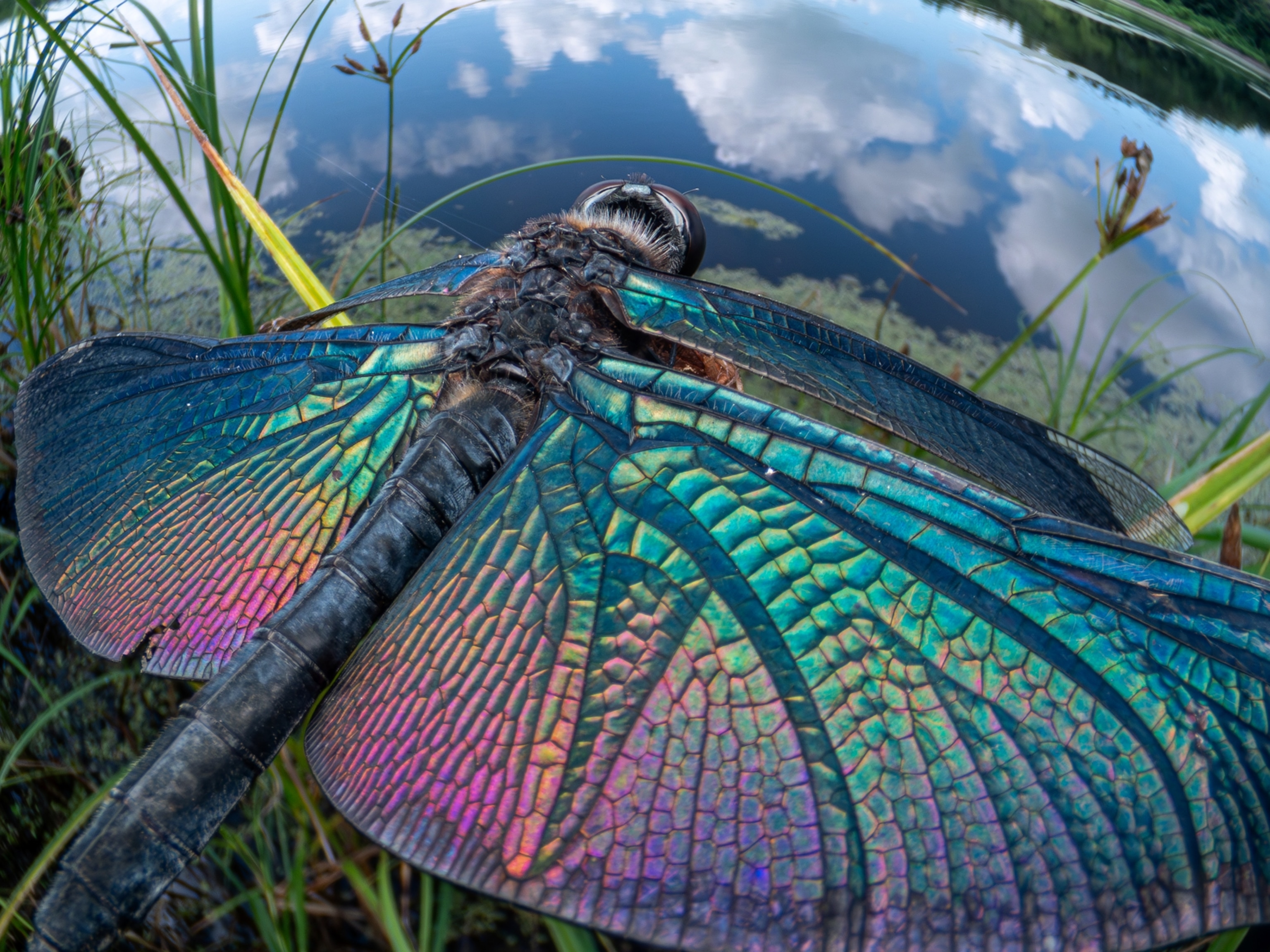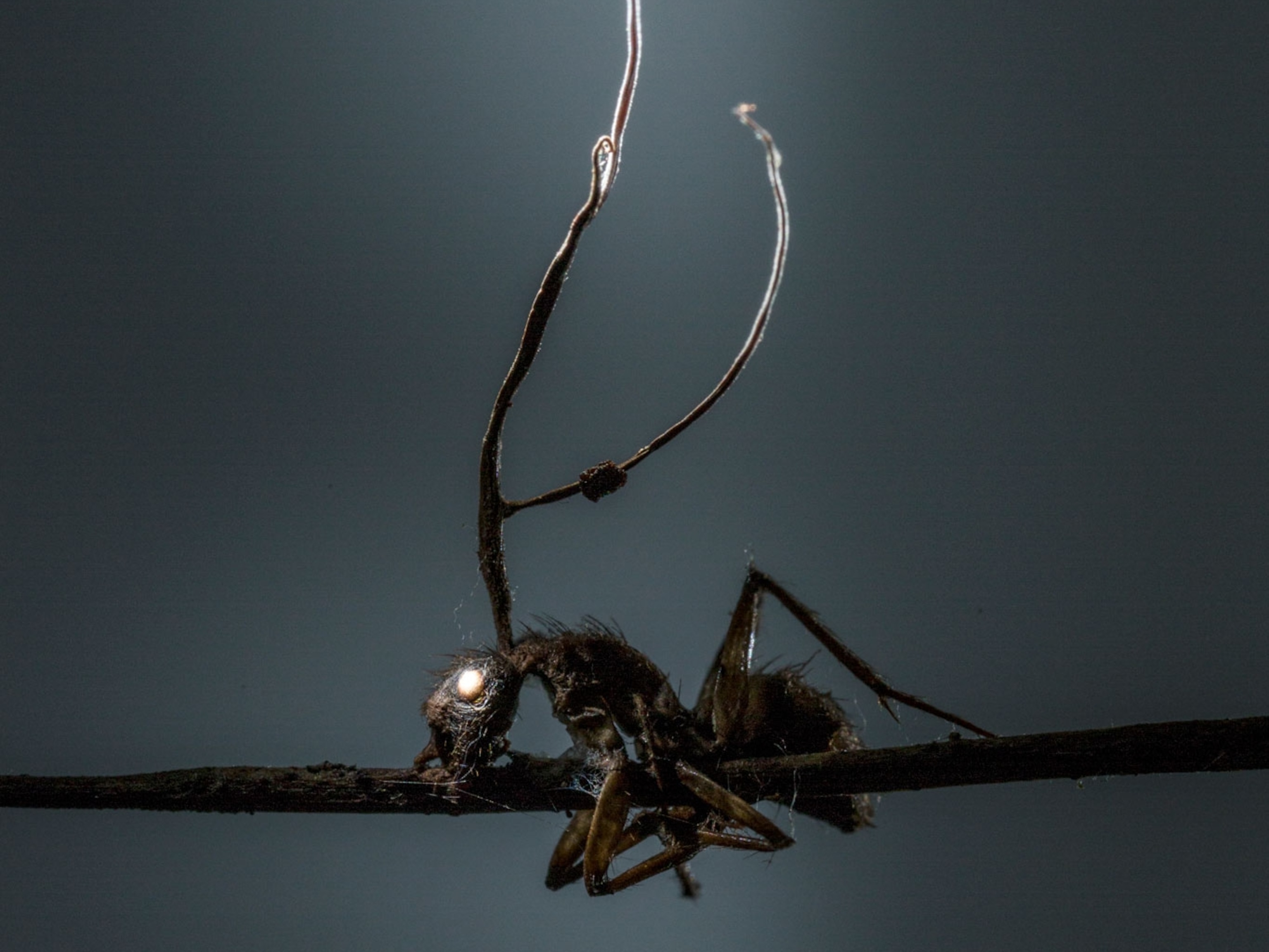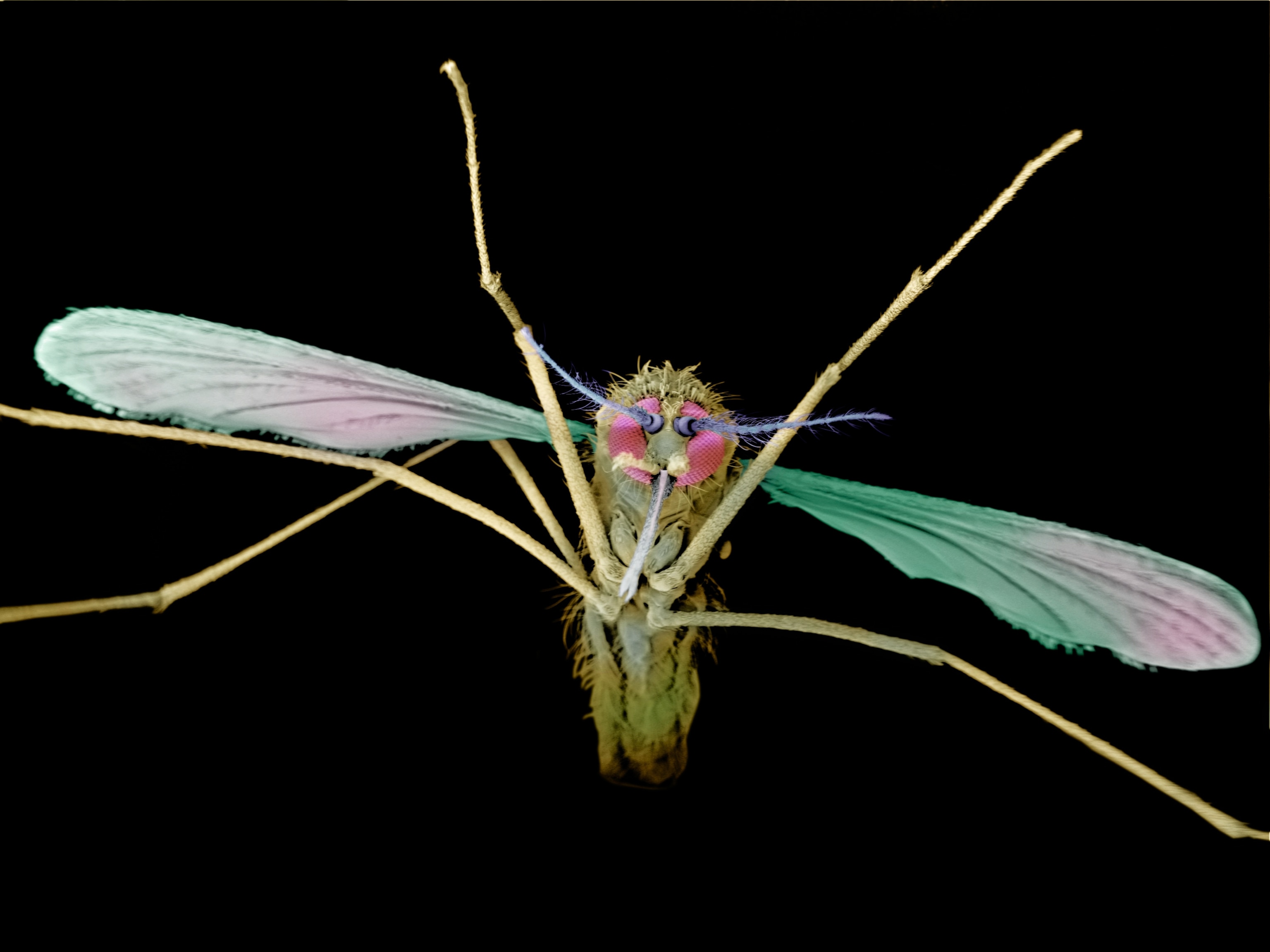
World’s Biggest Fly Faces Two New Challengers
The two newfound fly species, each as long as a finger, were collecting dust in museum collections.
The planet's largest fly faces two new challengers, which were discovered collecting dust in old museum cabinets.
With wingspans as wide as a hand and finger-length bodies, the newly described insects are almost as eye-popping as their world-record relative, Gauromydas heros.
Scientists identified G. mateus and G. papaveroi from 14 forgotten specimens found in collections in Brazil, France, and Costa Rica that date back to the 1930s.
These specimens are the only known trace of the two new species, according to study leader Julia Calhau, of the University of São Paulo's Museum of Zoology in Brazil.
With body lengths of up to 1.7 inches (4.3 centimeters) and wingspans of up to 3.5 inches (9 centimeters), neither species in the small sample rivals the largest examples of G. heros.
But Calhau believes they might—if more flies can be found in museums or in their wild habitat of Central and South America.
“The range size of G. heros is large—32 to 70 millimeters [1.3 inches to 2.7 inches]—and the two new species could vary drastically in length as well,” says Calhau, whose study appeared November 26 in the journal Zootaxa.
Elusive Giants
While the museum specimens are labelled with capture locations in Argentina, Brazil, and Costa Rica, tracking down their living descendants will be a major challenge.
Nothing is known about the lives of G. mateus and G. papaveroi, Calhau says, and even previously known Gauromydas flies are incredibly elusive.
Torsten Dikow, a research entomologist at the Smithsonian Institution’s National Museum of Natural History in Washington, D.C., is a world expert on mydas flies (Mydidae), the family to which these goliaths belong.
But even he has never set eyes on a living Gauromydas fly. “We know very little about their biology because they are so rarely observed,” says Dikow, who wasn’t part of the study team. (Also see "Why Giant Bugs Once Roamed the Earth.")
One explanation is that “the flies are just rare,” and the adults are “active for a very short time of the year,” he says.
In addition, the winged adults mimic both the appearance and high, fast-flying behavior of large pepsid wasps—also known as tarantula hawks.
This helps the flies scare off predators, but they may succeed in frightening off entomologists, too.
While Gauromydas flies are quite harmless, “you don’t want to be stung by such a wasp,” Dikow says.
Ant Nest Clues
Much of what we do know about giant flies is thanks to a researcher who managed to locate breeding sites of G. heros in southeastern Brazil in the 1940s.
The scientists observed the insects mating near leafcutter ant nests, in which they laid their eggs. The fat grubs feasted on beetle larva that scavenge in ant-waste chambers.
As for the adults, “I believe they are nectar feeders, as they have developed mouthparts and were seen visiting flowers,” Calhau noted.
The same may be true of the newfound species, she says, since the original specimen labels reveal that some of the monster flies were caught using agave nectar as bait.
Time will tell whether G. mateus and G. papaveroi will earn the title of biggest fly, but they aren’t likely to be in the running for fly heavyweight champ. (Also see "Cricket Has World's Biggest Testicles.")
Pantophthalmid flies, or timber flies, as they’re sometimes known, “are shorter, but might be heavier because they are stockier,” Dikow says.
These flies are hardly ever encountered either—so don’t worry, you aren’t gonna need a bigger fly swatter.





